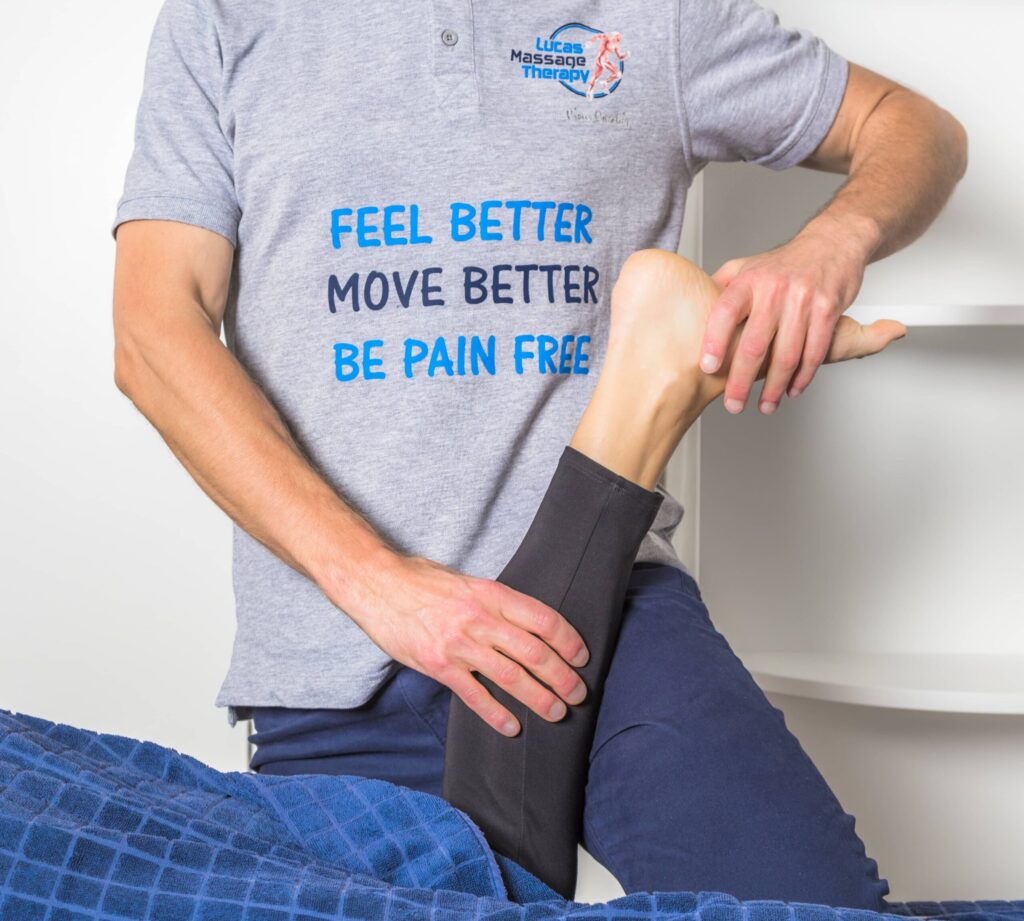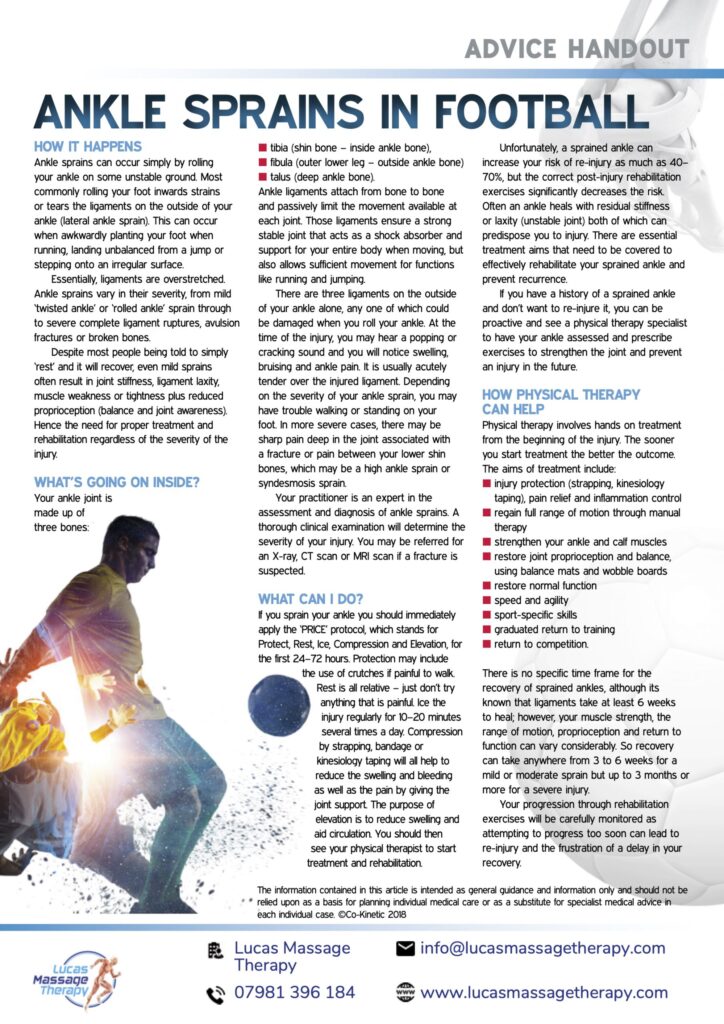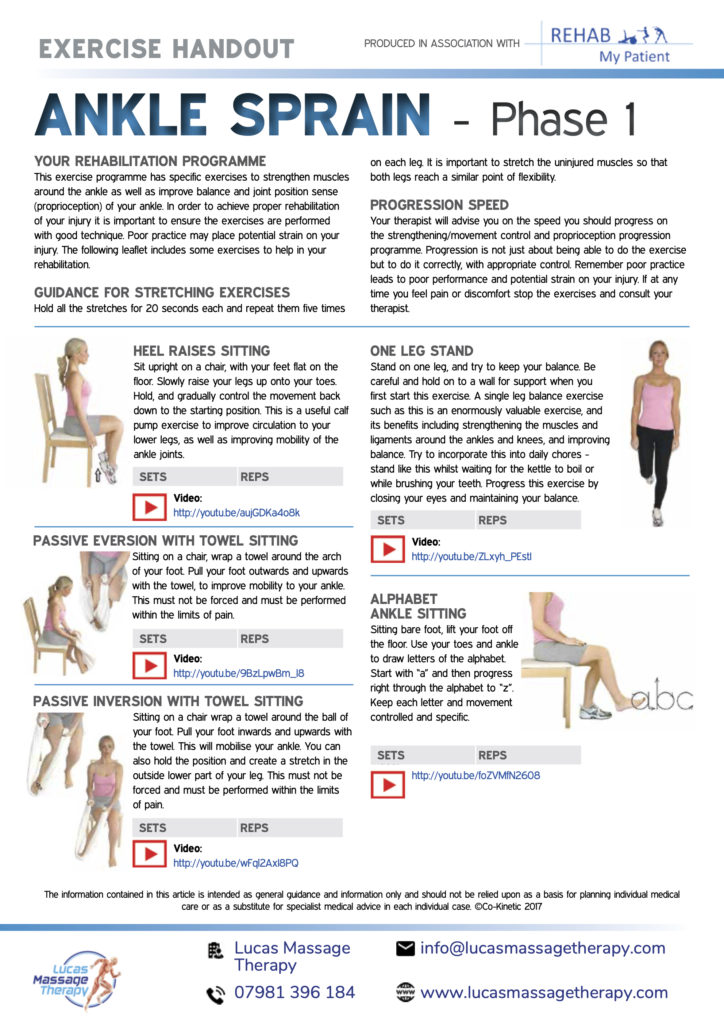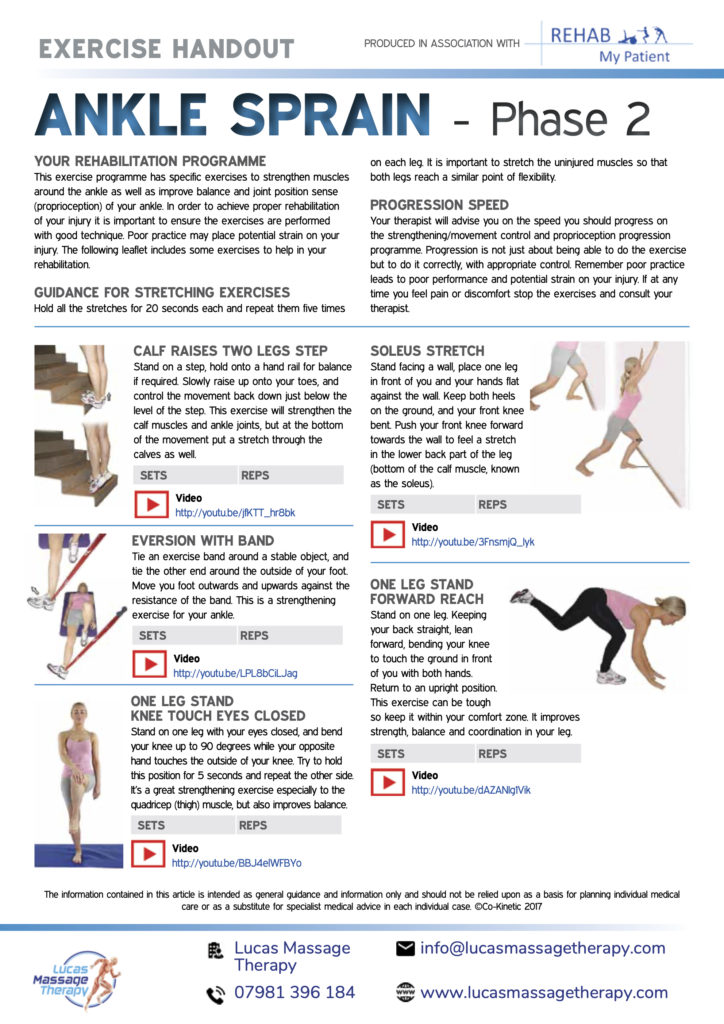Ankle sprains are among the most frequent of all sports injuries. A sprained ankle is an acute injury to the ligaments that support the ankle structure. Stretching or tearing of the ligaments can happen when the foot is twisted or rolled forcefully. motion could lead to damage to the ligaments of the ankle, although the joint is designed to adapt to uneven terrain. Sports involving, sprinting, running, or jumping on uneven or changing surfaces could cause ankle sprains. Cross country, football, basketball, and hockey are also some of the sports associated with ankle sprains.
Sprained ankle inversion or lateral sprains usually occur when pressure is applied to the ankle plantarflexion. The anterior ligament is mainly injured. The medial malleolus might act as a fulcrum to further injure the calcaneofibular ligament if the strain persists. The peroneal tendons could absorb some of the strain. Medial ankle sprains are not so common because of the bony structure and the strong deltoid ligament of the ankle. Some tearing of the fibres may occur when ligaments are stretched beyond their normal range.
Sprained ankle cause of injury
Force or rolling to the foot, mainly laterally. Sudden twisting of the foot.
Sprained ankle symptoms
First-degree sprains: Little swelling: stiffness in the joint with mild pain.
Second-degree sprains: Stiffness and moderate swelling: moderate to severe pain: difficulty weight-bearing with some instability in the joint.
Third-degree sprains: Severe ankle pain and swelling: unable to weight-bear: loss of function and instability in the joint.
Complications if left unattended
Instability and chronic pain in the ankle joint can result if left unattended. Loss of flexibility and strength and loss of function might result. The probability of re-injury increased.
Sprained ankle treatment
RICER. Second and third-degree sprains might need immobilization and medical attention might be sought.
Sprained ankle rehabilitation and prevention
Strengthening the muscles of the lower leg is very important to avoid another sprain in the future. Balance training helps to enhance proprioception ( joint position sense and the body’s awareness of motion ) and strengthen the weakened ligaments. Exercises for improving flexibility enhance mobility and decrease stiffness are essential. Bracing to action during the return might be needed. It can’t replace flexibility and strengthening development.
Long-term prognosis
With good rehabilitation and strengthening no limitations should be experienced by the athlete. A small gain in the probability of injuring that ankle might happen. Athletes who continue to have difficulty with the ankle may require additional medical interventions. It includes in rare cases, surgery that is possible to tighten the ligaments.
Ankle sprain recovery time
Grade l sprains typically take 2-4 weeks.
Grade II sprains take more like 6-8 weeks.
Grade III sprain. The patient is typically in therapy for 12 weeks to 6 months before returning to sports activities that require weight-bearing.

Sprained ankle treatments – Sports massage Watford
From around 3 to 5 days after an ankle injury, sports massage will help ease the pain while promoting blood flow to the sprained area. Sports massage & deep-tissue massage is focused mainly on the muscles located around the ankle, front and back of the feet. There are many ligaments, tendons and muscles located around the ankle and feet. The tibialis anterior, abductor hallucis, extensor hallucis longus, extensor hallucis brevis, dorsal interosseous, extensor digitorum longus and the lumbrical muscles.
An ankle sprain treatment and foot massage involves a range of techniques, each used to decrease pain, relieve tension and improve blood circulation. The sports massage therapist at Lucas Massage Therapy in Watford uses sports massage to decrease tightness, reduce pain and improve sprained ankle recovery time.
Experience the joy of moving freely again
Sports Massage & Deep Tissue Massage in Watford to help you feel better, move better & be pain-free
What is an ankle sprain? Ankle sprain treatment and recovery time.

Ankle sprains in football.

Sprained ankle exercises

Ankle sprain exercises


